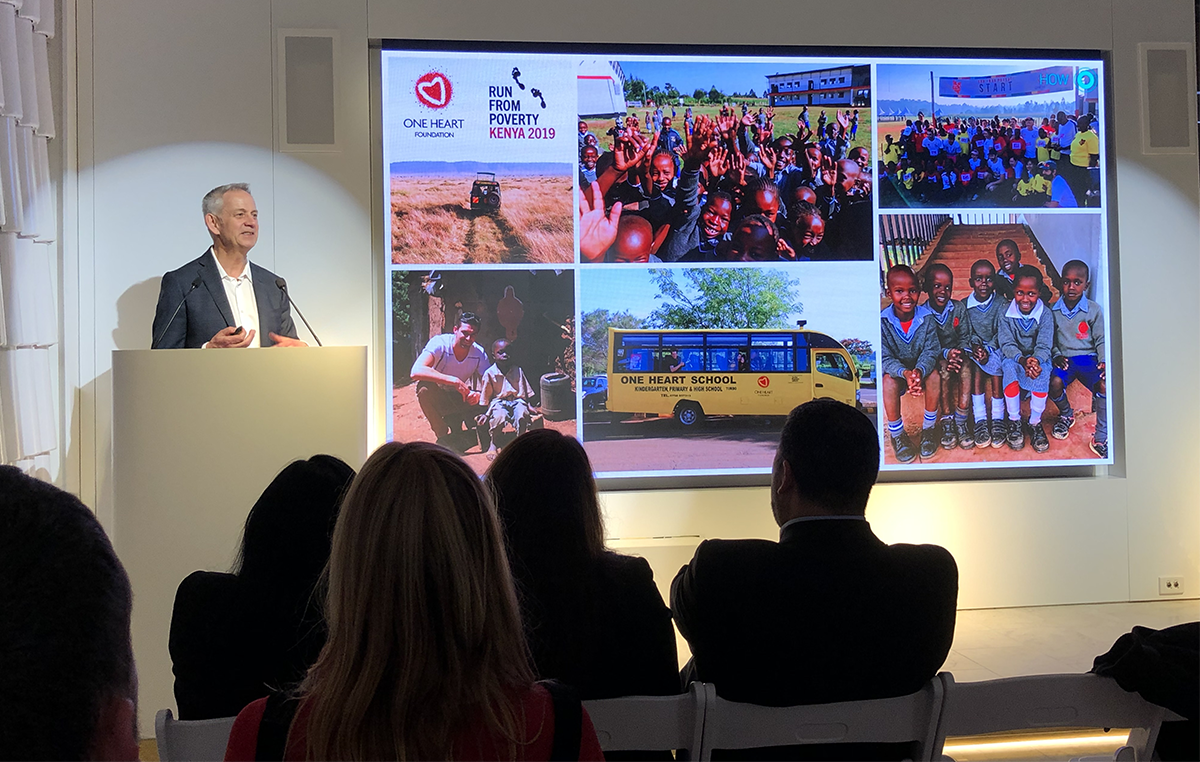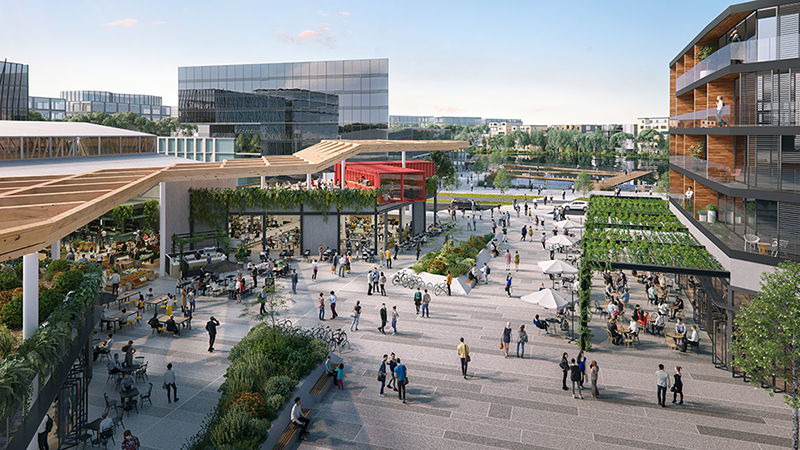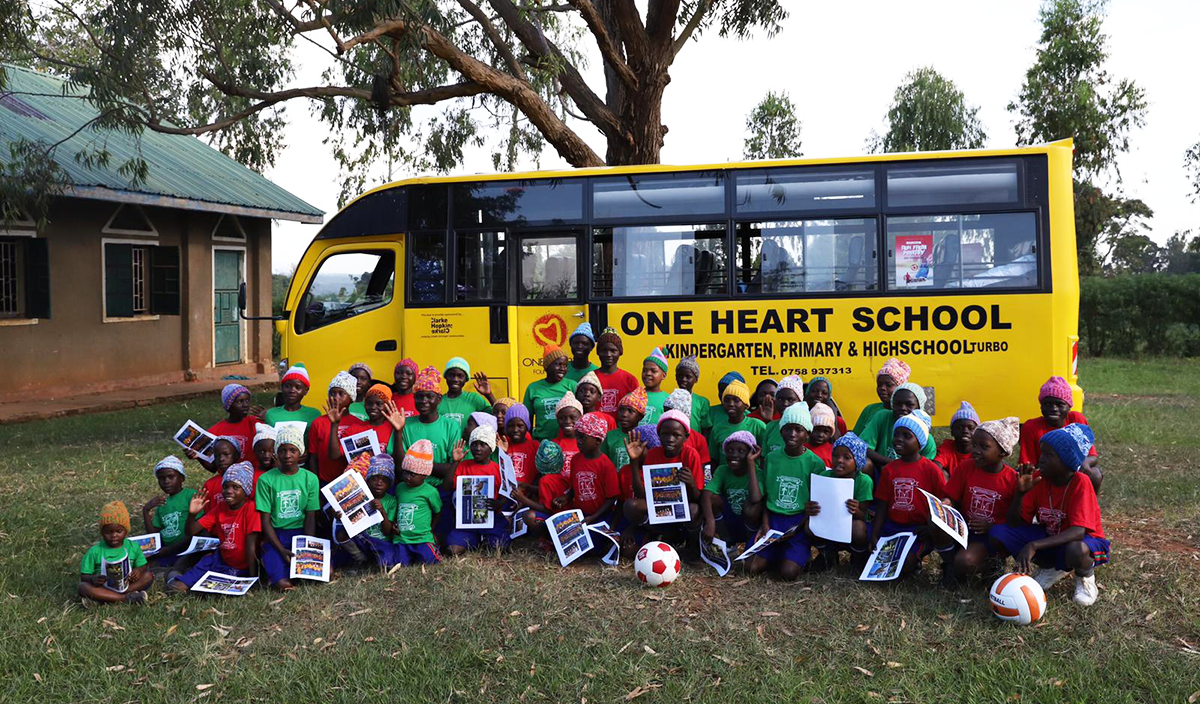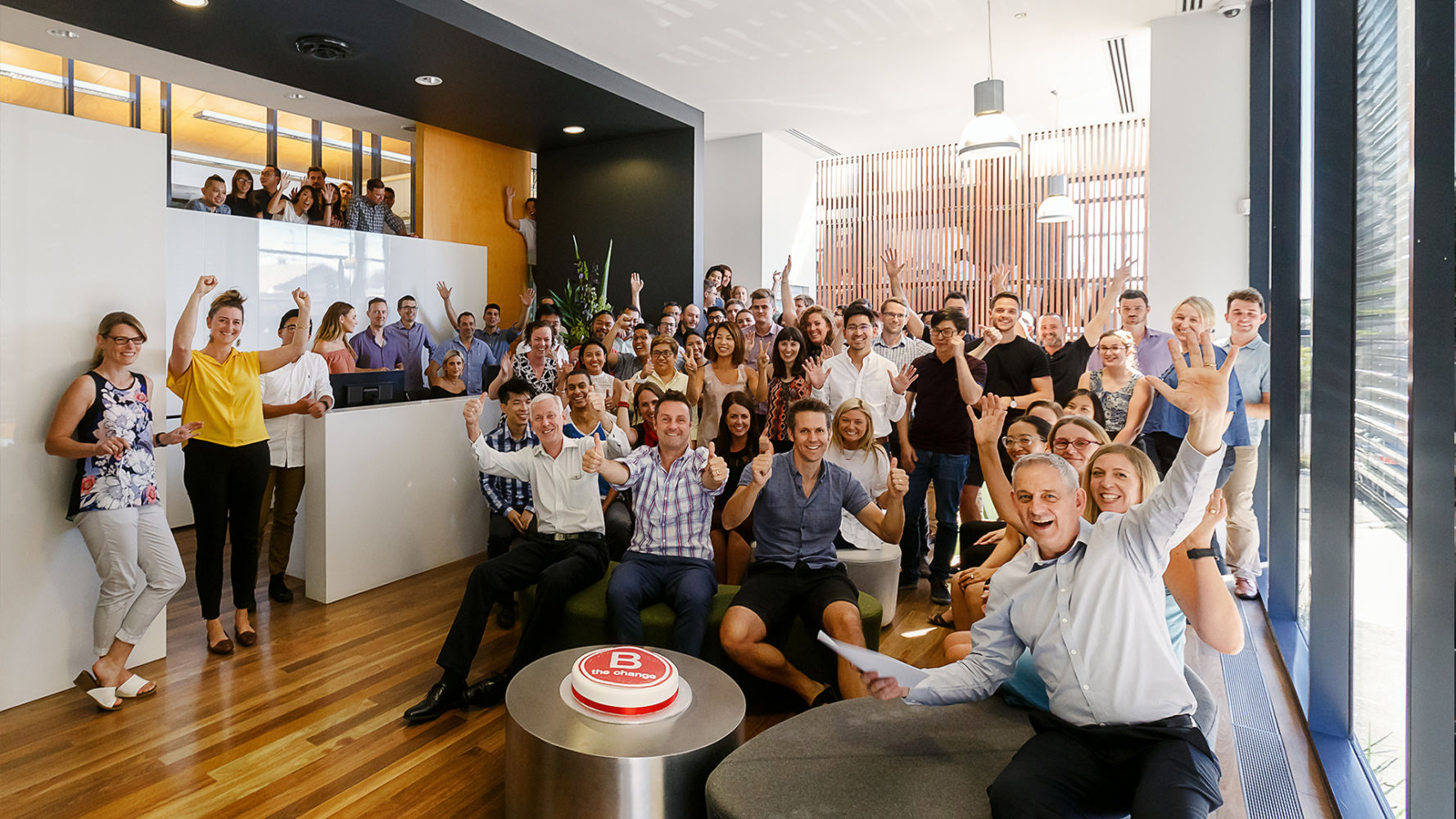The Social Conscience of Architecture

ClarkeHopkinsClarke Managing Partner Robert Goodliffe recently spoke at an ACA – Vic/Tas event on the importance of social responsibility in architecture, revealing how a holistic approach can build culture internally and provide a resilient business model. The following is an edited version of his presentation.
We all recognise that architects are generous people and freely give their time to their relatives (mum’s bathroom), their friends (Nicko’s carport) and their community (the footy club change rooms or child-care kitchen reno) as well as volunteering their experience to the ACA or the Institute.
Traditionally, membership of boards and organisations have been a means to gain knowledge and build professional relationships that are fundamental to professional and business development.
At our practice we have sought to go beyond these norms and to develop formal partnerships of mutual benefit as we believe that ‘Doing Good is Good for Business’.
Simon Sinek, author of Start with Why, developed the famous ‘Golden Circle’ Diagram, which has become recognised as a way to focus actions, behaviours, decision making and even leadership style into Why, How and What.
WHY: My Personal Why
The most important and fundamental place to start is with your ‘Why’. My personal ‘Why’ has evolved in recent years through continued learning, collaboration and experience, and as my thoughts turn to legacy. International travel provides experience of diverse cultures and communities, providing perspective on daily life and business. Recent experiences of Kakadu and Uluru provide insights into indigenous heritage and culture that was deliberately omitted from my ‘baby boomer’ education in the 1960s with the focus on the colonial explorers.
A pilgrimage to Bhutan with Small Giants to explore ‘Gross National Happiness’ (instead of Gross National Product) as a way of defining success as a country also provides metrics on alternative ways to define success in business. I gained an important takeaway from Bhutan, where we were advised to “think less – feel more”:
“Know your direction, then you have no competition … others are on a parallel path to their own future.”
The Bhutan trip and early morning walks with David Ritter (CEO of Greenpeace) led to a retreat to Kangaroo Valley to explore enhancing ‘Greenpeace Impact’ (the next three years are critical for the planet as the decision on Adani went badly, the decision on oil drilling in the Bight is pending and the earth is on fire from the Amazon to the Arctic). Volunteering with like-minded organisations in Thailand (with Hands Across the Water) and Kenya (with One Heart Foundation) is based upon shared value through shared experiences.
WHY: The Evolution of ClarkeHopkinsClarke Values
Our practice began in 1960 when three young architecture graduates from RMIT, Les Clarke, David Hopkins and Jack Clarke, recognised in architecture a way to connect people and improve lives. Our founders were visionaries and incredible mentors: optimistic, energetic, humble people who quietly changed the way we design communities. Les Clarke founded Eltham College in 1973 and the school is our longest continuous client. Les has been a great mentor to us all. Jack interviewed me straight out of university in 1982 and I was employed with a strong interest in community architecture, having been taught by Jan Gehl during his first of many impacts on Melbourne. Our urban design practice continues to be inspired by his philosophies.
Our work today builds on that proud legacy of community creation and we have retained a partnership structure, which defines us and our philosophy. We have grown steadily since the Keating recession in 1991 (the year that I became a Partner – good timing) and are now a vibrant community 160 strong … which is challenging, exciting and scary in equal measure. Though we are large in number, I often voice that we are not a typical large practice and feel more like a medium practice that has grown sideways.
Social responsibility has always been important to our practice. We feel that ‘doing good is just good business’. This attitude has helped us develop relationships with some truly inspirational partners and clients who are doing great things. It has also helped us build a really positive culture and attract team members who share our values.
HOW: People, Spaces, Places
We act on our ‘why’ as architects by first considering people, then spaces, then places in our project work. Our work spans health, education, seniors living and care, mixed use, multi-residential, commercial, community, interiors and urban design. We look for opportunities to enhance community in each type of project – schools, hospitals, aged care and aim to bring cross sector experience to bear wherever possible.
We aim for complexity and diversity in our projects as this reflects the human condition. In the case of retail projects what were once shopping centres have now become town centres as we aim to create dense, walkable urban communities. Several years ago we sought to more clearly define our aim and ‘Creating Vibrant Communities’ then evolved as our mission.
This term sat around until Dean Landy was given the opportunity to write a business book. He determined to give depth of meaning to Creating Vibrant Communities and the book became a full colour mixture of personal journey, research piece (involving interviewing 50 thought leaders) and community creation handbook. It was published in 2016.
ClarkeHopkinsClarke benefits from our belief in Open IP (this book is the most tangible example), collaboration (Wayne Stephens is Chair of Learning Environments Australia) and research (ClarkeHopkinsClarke are sponsors of and participants in a University of Melbourne research project exploring ‘Schools as Community Hubs’).
We gain knowledge through research, a seat in forums where we are ‘not the smartest people in the room’ and connections with like-minded people and organisations.

Proposed masterplan for the 285-hectare Minta Farm in Berwick.
HOW: One Heart Foundation
ClarkeHopkinsClarke is a proud supporter of One Heart Foundation, founded in 2007 by Dean Landy (the same guy…he has found the secret of the 36-hour day). One Heart builds Children’s Villages to provide education, health care, accommodation and, most importantly, love to orphaned and abandoned children in Kenya and Uganda.
The Children’s Villages are socially, environmentally and financially sustainable. Hundreds of children from the local community are educated in the primary and secondary schools, alongside the One Heart kids. In 2018, ClarkeHopkinsClarke purchased a school bus to safely transport local children to and from the schools each day.
Cropping, aquaculture, dairy and poultry industries, and a bakery, employ local community members and the foundation also supports children living with their family in the community.
Each year the practice provides the opportunity for staff members to attend the ‘Run from Poverty Experience in Kenya’ through additional leave and payment of airfares and ground costs. The ClarkeHopkinsClarke community works together to assist each participant to raise the required $10,000 contribution, usually significantly exceeding this sum.
ClarkeHopkinsClarke benefits from our strategic CSR (corporate social responsibility) partnership with One Heart, as participants receive leadership training as well as a unique life experience, and the practice community culture is strengthened through active team support. There is still room on the team of 20 taking on the Run from Poverty in July 2020. Head to the One Heart Foundation website if you’re interested to join us.

In 2018, ClarkeHopkinsClarke donated a bus to the One Heart Children’s Village School.
HOW: Architects without Frontiers
ClarkeHopkinsClarke is one of 12 Architects Without Frontiers (AWF) Network Partners, contributing to enable AWF to continue delivering humanitarian projects in a sustainable way.
We are soon to commence working pro-bono for Maranatha Health on Concept Design for an 80-bed hospital, providing high quality care to mothers and children in Fort Portal, western Uganda.
ClarkeHopkinsClarke benefits from our involvement with AWF through the association with like-minded practices, the knowledge gained through working on culturally diverse projects, and the strengthening of purpose within our team.
HOW: B Corporation
ClarkeHopkinsClarke achieved B Corp certification three years ago – and we feel as though we have found our tribe.
B Corp certification for business is like Fair Trade certification for coffee. The rigorous certification process over many months required us to evaluate all aspects of our practice and to transparently document our commitments and actions relating to our practice community, larger society and the environment.
This week 181 of the 193 members of the US Business Council signed a new statement of its principles of corporate governance. They stated that the principles espoused by Milton Friedman that ‘the company’s job is to make money for their shareholders’ no longer accurately described the way companies should strive to create value. The new statement adopts the B Corp principle that the interests of customers, employees, suppliers and communities as well as shareholders are inseparable, pointing to issues such as diversity, social inclusion and the environment.
The statement was signed by the likes of Amazon, IBM, Walmart, Boeing and Coca-Cola, which bodes well. But the fact that it was also signed by Lachlan Murdoch from Newscorp means that we will need to wait and see.
Of nearly 3000 B Corps worldwide, Melbourne has fostered the greatest concentration of B Corps related to population since Small Giants (who developed The Commons at the height of the GFC) brought BLab to Australia / New Zealand.
We partner with fellow B Corps locally on a professional services level and drink ‘Monochrome’ coffee from ‘Keep Cups’ and utilise ‘Who Gives a Crap’ products. We have installed ‘eWater’ to eliminate the use of chemicals harmful to our environment. We have conducted our own ‘War on Waste’ analysis leading to a significant improvement in recycling processes and have recently purchased a ‘dehydrator’ to create compost from food waste in an office environment.
We are about to commence re-certification and will be aiming to undertake further measures to amplify our impact and improve our score. We are looking to utilise the United Nations Sustainable Development Goals as a roadmap for our next steps.
ClarkeHopkinsClarke benefits from being part of the B Corp Community as B Corp principles provide a point of reference for decision making on actions, activities, projects, collaborations and clients. It is common in our practice to hear judgements voiced such as “that is very B Corp” or “they are not very B Corpy”.

ClarkeHopkinsClarke is a proud B Corp company and the world’s largest certified architectural practice.
WHAT
Commencing with ‘Why’ and exploring ‘How’ we take actions to impact on tomorrow means that ‘What’ we do – our architecture, interiors and urban design – can thrive.
Like-minded Clients
We are able to engage in conversations with clients that have similar values, leading to projects with shared benefits for all stakeholders. One example under construction in Brunswick is Little Miller and Nightingale Apartments, which explores a 50/50 mix of Nightingale and ‘standard’ apartments sharing similar social and environmental aspirations. An added benefit to this project is the opportunity to work with Breathe Architecture.
Pro-bono Work
We are able to do work that matters and has a lasting impact and this often involves pro-bono work to get projects ‘shovel ready’. One example of this is a proposal for the new Greenpeace HQ for the Asia Pacific, where we are collaborating with angel investors to provide peppercorn rental to support an organisation that we all believe in.

Impact Opportunities
We are given opportunities to leverage our experience and relationships to impact communities. An example of this is an MOU with Uasin Gishu County Government in Kenya, who are inspired to transform the provincial capital Eldoret leading to ASEAN ‘Smart City’ status. We are inspired to assist in creating a city that will not only improve the quality of people’s lives, as a large portion of the population of Kenya transitions from rural to urban lifestyles by 2030, but will also create the environment to see generational transformation by unlocking and enabling the entrepreneurial spirit that lives within each Kenyan.
We have also been given the opportunity to design and deliver a culturally appropriate hospital in Lae, providing a full service hospital facility to support the highland communities of Papua New Guinea.
Shift in Perspective
We are given opportunities to shift our perspective from projects to communities where we can make an impact on a larger scale. An example of this is CLARA, where the perspective is on nation building.
We are the consortium design leaders on this visionary project, which uses a privately funded value creation and capture model to develop eight cities of 400,000 people in the corridor between Melbourne and Sydney, connected by an elevated ‘very fast train’. This transport option is sorely needed as the Melbourne–Sydney air corridor is one of the most heavily travelled globally. This proposal delivers an express service 2.5 hours door to door.
Current population forecasts require a city the size of Canberra to be built each year for the next 30 years. The current solution is to let Melbourne and Sydney expand. This is a once in 100 year opportunity to envisage a new city model, based upon walkable urbanism, car free with autonomous public transport systems and with closed loop water, power and waste systems.
The business model, which is currently with the Minister for Population, Cities and Urban Infrastructure, required us to masterplan the city, design the key infrastructure and envisage the public realm. Of course, we first considered people, then spaces, then places…
The vision, funding, technology and employment generation is in place and we are hopeful that there is enabling support to enable the largest nation building project in our history to proceed.
BENEFITS
The legacy of this holistic approach is that it provides a resilient business model and a challenging and engaging future. It builds culture internally.
A clear focus on ‘Why’ supports a strong culture based upon caring for community and each other.
I will leave you with a quote from Hugh Mackay, who wrote the forward to Creating Vibrant Communities.
“That’s the beautiful symmetry of human society; we need communities and they need us.”
This article is an edited version of a recent presentation given at the Vic/Tas event, The Social Conscience of Architecture. It was published with permission.
Robert Goodliffe is a Partner at ClarkeHopkinsClarke (CHC). During his three decades as Partner, CHC has grown exponentially, won over 60 industry awards and now services eight diverse sectors. Guided by the CHC mission of ‘Creating Vibrant Communities’, Robert has made significant contributions across the education, aged care, residential and community infrastructure sectors and currently provides oversight of the practice’s senior living and care portfolio.
A progressive thinker, a constant learner and an ever-active collaborator, Robert seeks out ways CHC can make a positive impact through and beyond its project work. Under his leadership, ClarkeHopkinsClarke has been certified as a B Corporation, formalising its commitment and leadership within this ethical business space.
Robert is particularly passionate about supporting the personal and professional development of all team members. Living by example, Robert has recently travelled to Bhutan to study Gross National Happiness, he has ‘Run from Poverty’ to support One Heart Foundation in the care and education of orphaned and abandoned children in Kenya, and he regularly contributes to B Corporation Champions Retreats, to progress this movement’s impact across the Australian and international business community.
